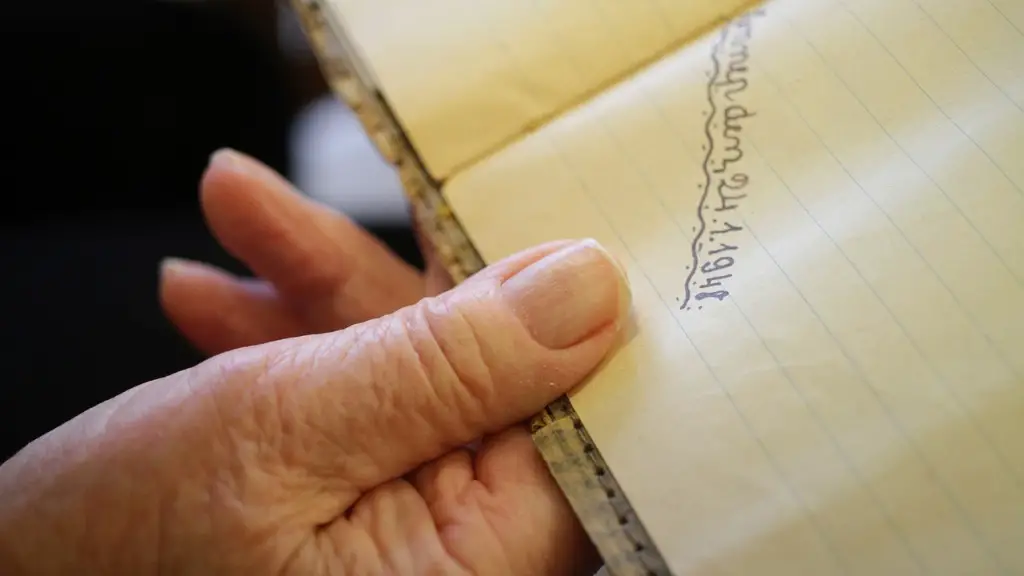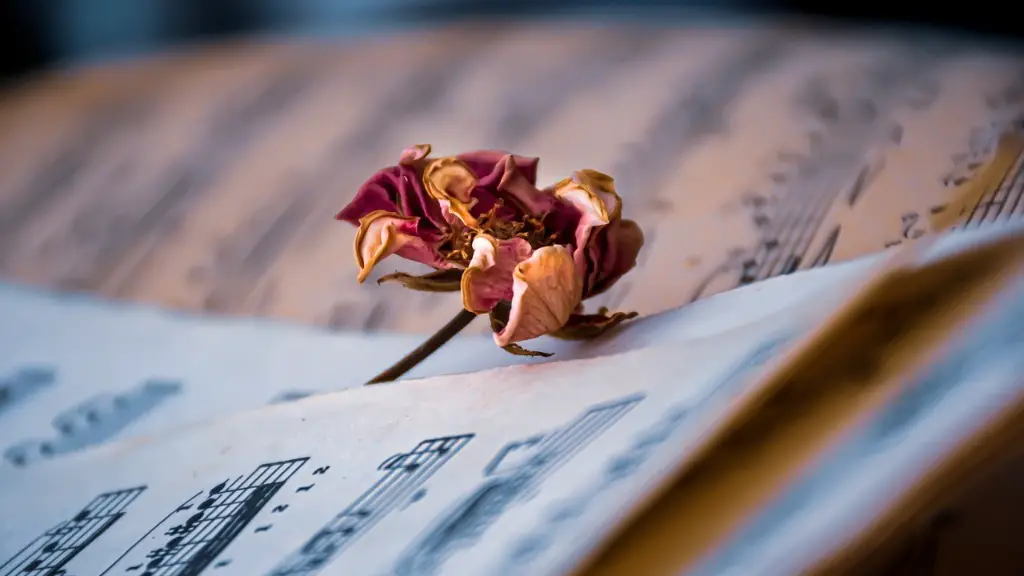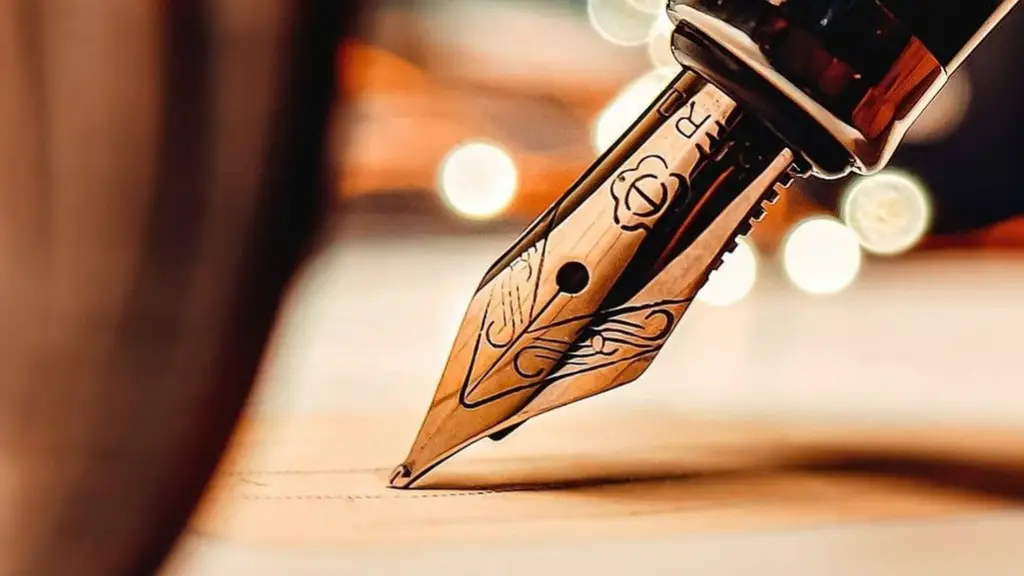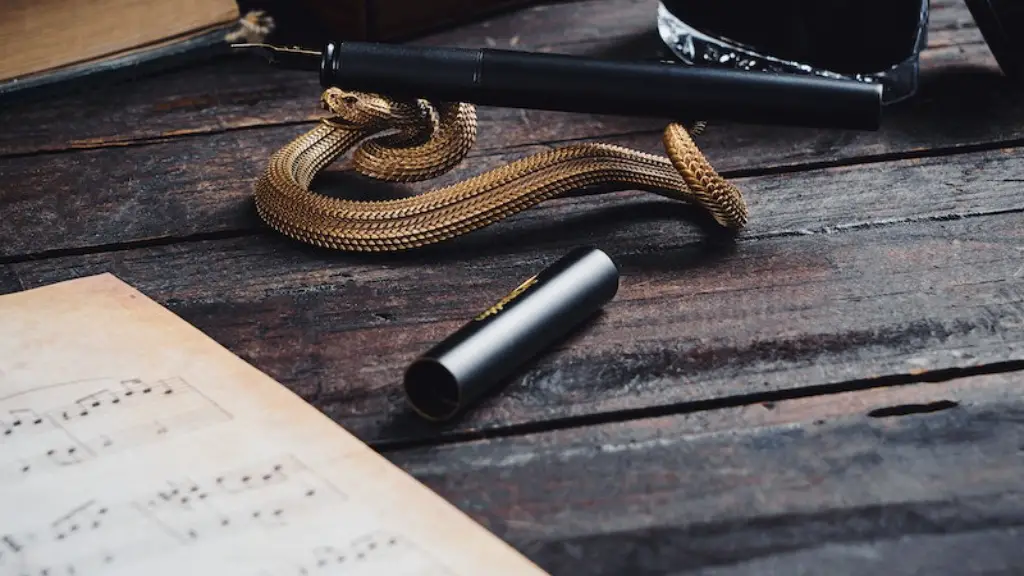Understanding Iambic Poetry
What is iambic in poetry? Iambic poetry is a style of poetry characterized by the use of an iambic meter in which a pair of syllables comprises a metrical foot, represented by an “x” followed by a “/” (for example, “x /”). The iamb is considered one of the most common metrical patterns in English verse, and is found in famous works written by Shakespeare, Milton, and Pope.
Iambic meter can be thought of as a type of rhythmic pattern created by lining up pairs of successive syllables with the first syllable unstressed and the second syllable stressed. Stress is the emphasis given to syllables when they’re pronounced- the more you stress a syllable, the louder and longer it becomes.
Iambic meter often follows a regular pattern called an iambic pentameter, where the line consists of five sets of two syllables each. They are typically arranged in iambic pairs like “du-DUM,” and can be written as x/x/x/x/x/ or U/x/x/x/x/ where U = unstressed and x = stressed.
In poetry, the use of iambic meter can add a sense of rhythm and structure to a poem and can create a more musical feel. It can also give the poem a particular pace and can help to create feeling and emotion in the writing.
When using iambic, writers often have to pay particular attention to their syllable counts, as it’s important to make sure that each line stays within the expected meter. The best way for writers to do this is to be aware of the stresses and unstresses in their language, and to try to emphasize certain words in each line.
In addition to its use as a poetic meter, iambic is also used in prose, often to create a particular style and flow in the writing. Writers may also choose to use iambic in plays and screenplays to give their pieces an additional layer of poetic and dramatic effect.
Analyzing and Applying Iambic Meter
When faced with the task of analyzing a poem to determine if it is iambic, some critical steps must be taken. First, one has to identify the metrical feet in the poem. Metrical feet are the smallest unit of rhythm in a poem and are comprised of syllables. The meter of a poem can then be determined based on the prevailing metrical feet in the poem. Once the meter is identified, it should be noted to help determine which type of meter is being used.
Iambic meter can be recognized easily in poetry, as it typically follows a set format and pattern. Lines that contain pairs of alternating stressed and unstressed syllables may indicate that a poem is written in iambic meter, and the more consistent the pattern, the more likely it is that the poem follows an iambic structure.
Once the meter has been identified, the reader can look to see how the meter works within the poem, by looking at how it contributes to the overall effect of the poem. For example, is the rhyme scheme affected by the iambic meter? Is there a certain musical or emotional quality within the poem that is enhanced by the use of iambic?
When writing in iambic meter, it is important to remember that the pattern should be consistent throughout the poem. Maintaining the iambic structure helps to create a steady rhythm and flow to the line, which can help enhance the impact and emotion of the poem.
It is also important to remember that iambic meter does not have to be used for every line in a poem. In fact, varying the meter can create interesting effects, and can be used to draw attention to certain lines or moments in the poem.
Historical Influences of Iambic Poetry
The use of iambic meter dates back to ancient Greece, where it first developed as a poetic device. It was initially used in the poetry of Homer and later popularized by literary figures such as Sappho and Pindar.
In the Renaissance period, the use of iambic meter gained popularity as poets such as Shakespeare and Edmund Spenser used it to create popular works such as Macbeth and The Faerie Queene. Later, in the 18th century, such literary figures as Alexander Pope and John Milton made use of iambic meter to create acclaimed works such as The Rape of the Lock and Paradise Lost.
Many contemporary poets also make use of iambic meter. For example, William Butler Yeats’s “The Second Coming” and Seamus Heaney’s “Digging” make use of iambic meter to craft powerful and resonant works.
The use of iambic meter in poetry has thus been established as a powerful and effective form of writing that can create memorable works of literature. It can be used in formal situations, such as in speeches or presentations, as well as in less formal situations, such as in song lyrics or rap.
Benefits of Writing in Iambic
Writing in iambic meter can offer many benefits for writers, such as improving their understanding of the technical aspects of poetry and its structure. The discipline and focus required in crafting a line in iambic meter can help writers develop their writing skills, such as their poetic voice and control of language.
In addition, iambic meter can help poets create a more unified poem and can help them focus on the sound of their words, as the meter requires writers to pay attention to which syllables are stressed, and how to arrange them to create the desired effect. This can help writers become more aware of their use of language and can help them find the right words to express their ideas effectively.
Finally, writing in iambic meter can also help poets create a more musical and emotionally charged piece of writing. The discipline of the meter can create a rhythm that readers can follow, and can help to create an overall atmosphere in the poem and an endearing feel in the writing.
Contemporary Aspects and Applications for Iambic Poetry
In recent years, iambic meter has seen a revival in its use and has been applied to many forms of writing, from rap and hip hop to children’s stories. Iambic meter can be used as a tool for teaching children about the structure of poetry, and can also be used to explore the rhythmic aspects of other forms of writing.
Rap and hip hop songs also commonly use iambic meter, often using regular iambic pentameter lines and varying the stresses to create a different effect. This form of writing can be seen in works by Jay-Z, Kendrick Lamar and Kanye West.
Iambic meter can also be found in lyrical poetry, which often combines iambic meter with rhyme schemes to create a lyrical or musical effect. Poets such as Langston Hughes and Anne Sexton used iambic meter to create emotionally charged works that seem to speak directly to the reader.
The use of iambic meter can also be found in film and other forms of popular culture, often in dialogue and scenes to create a more rhythmic and musical feel. For example, the Lord of the Rings films contain a number of scenes in which characters deliver dialogue in iambic pentameter, further evoking the epic fantasy world created by these films.
Conclusion
Iambic meter is a powerful and versatile poetic tool that can be used in many different genres and forms of writing. It has a strong history of use in literature, and can also be seen in many contemporary works. Writers can use iambic meter to create a more unified poem and to craft a more musical and emotionally charged piece of writing. By understanding and experimenting with iambic meter, writers can improve their understanding of the technical aspects of poetry and develop their own writing skill and poetic voice.





